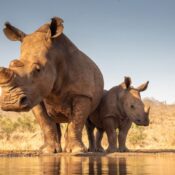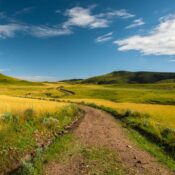Lake Manyara National park

Lake Manyara National park
Lake Manyara National Park lies in a very dramatic setting up against the steep western wall of the Rift Valley. Being directly en route to Ngorongoro from Arusha or Tarangire, it is a poplar place either for a day visit or for longer. However, it is an exceptional National Park that would deserve a visit regardless of where it was located; in fact so exceptional that it was declared part of a World Biosphere Reserve in 1981. There are at least 5 very different habitats existing side by side in an area of 325 sq km. In fact on a game drive you see more variation in the distance travelled than anywhere else in Africa. There are copious ground water springs at one end, spilling out from the base of the Rift Valley wall. These give rise to a truly jungle type of ground-water forest, which is in stark contrast to the dry bush acacia woodlands all around, and to the enormous shallow alkaline lake that lies on the valley floor. Then there is also the steep escarpment wall with its own boulder strewn habitat. In the south of the Park are found extensive hot water springs as testament to the active tectonic nature of the Rift Valley, and there is a long walkway out across the steaming rivulets and reed beds of the lake edge giving a magnificent view up and down the full length of this part of the Rift Valley. Here you can watch old bull buffaloes wallowing in the warm alkaline mud, and on occasions vast flocks of flamingos in Enormous Baobabs are scattered throughout the drier parts. In fact one of these baobabs was visited by Disney Imagineers in 1994 and became the inspiration for the baobabs that feature in Disney Worlds famous Animal Kingdom theme park in Orlando, Florida.When to Visit. All year, although the most popular times are during the two dry seasons June – October and January and February.
Wildlife
Most of the characteristic East African mammals are found in Manyara including elephant, buffalo, hippo, lion, leopard, cheetah, giraffe and lots of plains game, and reputedly the largest baboon troupes in Africa. Some lions have opted to rest up during the heat of midday in trees, giving rise to the mistaken belief that the Manyara lions are somehow different. Lions in many parts of Africa often spend time on the lower broad limbed branches of trees probably to escape flies.
History
Manyara was made a National Park in 1960 having previously been a Game Reserve, and in 1981 became part of a World Biosphere.It is the place where Dr. lain Douglas Hamilton did his pioneer studies on African elephant, and elephant are very much a part of the experience here. Douglas Hamilton’s book ‘Among the Elephants’ is an account of his time in Manyara. Manyara is a great destination for birds and in particular water birds, including rafts of pelicans and literally millions of flamingos at some times of the year.



